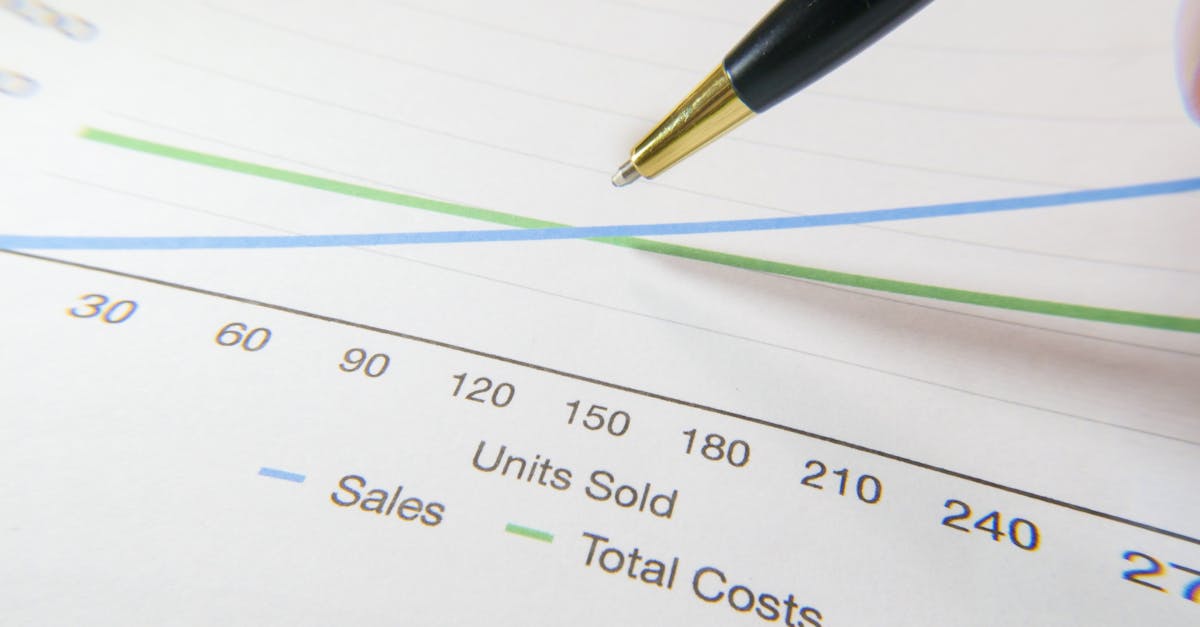Key Takeaways
- Automating loyalty program management enhances customer retention and engagement by delivering personalized rewards and experiences efficiently.
- Businesses save time, reduce manual errors, and streamline operations with automated systems compared to traditional methods like spreadsheets or punch cards.
- Real-time data tracking enables businesses to analyze customer behavior, tailor rewards, and make data-driven decisions for improved program performance.
- Automation integrates seamlessly with existing tools such as CRM or point-of-sale systems, creating a unified ecosystem for better customer experience management.
- Implementing automation fosters stronger relationships with customers through targeted offers, gamification features, and instant recognition of loyal patrons.
- Successful case studies demonstrate increased customer satisfaction, higher repeat purchases, and significant operational cost savings through automated loyalty programs.
Loyalty programs have become a cornerstone for businesses looking to boost customer retention. Studies show that increasing customer retention rates by just 5% can lead to a profit increase of 25-95%. Yet, managing these programs manually often feels overwhelming and inefficient. That’s where automation steps in, transforming how we engage with our customers.
By automating loyalty program management, we can streamline operations while delivering personalized experiences that keep customers coming back. From tracking rewards in real-time to tailoring offers based on behavior, automation lets us focus on building stronger relationships rather than juggling administrative tasks. It’s not just about saving time—it’s about creating value that resonates with today’s tech-savvy consumers.
As competition grows fiercer across industries, leveraging technology to enhance loyalty strategies isn’t optional anymore; it’s essential. Let’s explore how automation can revolutionize the way we retain and engage our most valuable asset—our customers.
Understanding Loyalty Program Management
Managing loyalty programs effectively strengthens customer retention and boosts engagement. Automation simplifies the process, reducing manual effort while improving efficiency.
Importance Of Loyalty Programs For Businesses
Loyalty programs incentivize repeat purchases and build lasting relationships. Customers who feel rewarded for their commitment are more likely to continue supporting a brand. According to a report by Bond Brand Loyalty, 77% of consumers say loyalty programs make them more likely to stay with certain businesses.
For example, a coffee shop offering free drinks after ten purchases encourages customers to keep coming back. Automated systems can track activities like these seamlessly, providing instant rewards without any hassle.
Additionally, businesses gain valuable insights into customer behavior through data collected from loyalty program interactions. This helps identify patterns such as preferred products or peak shopping times. With this knowledge, companies can create better-targeted campaigns that resonate with their audience.
Lastly, loyal customers often become advocates for brands they trust. They recommend services or products to friends and family, driving organic growth without added marketing costs.
Challenges In Traditional Loyalty Program Management
Traditional methods of managing loyalty programs often involve spreadsheets or physical punch cards. These outdated techniques are prone to errors and inefficiencies that frustrate both staff and customers.
Manually tracking points or rewards leads to inaccuracies—imagine realizing you’ve missed logging multiple transactions when a loyal customer demands their discount! Such situations damage trust and hurt business reputation over time.
Administrative tasks also consume significant resources. Staff spends unnecessary hours updating records instead of focusing on enhancing customer experiences directly.
Furthermore, scaling traditional systems becomes complex as businesses grow larger or expand across locations. Handling increased data manually slows operations considerably while increasing the risk of mistakes.
Benefits Of Automating Loyalty Program Management
Automation transforms loyalty programs into efficient, customer-focused systems that drive retention and engagement. By leveraging data and technology, businesses can streamline operations and enhance the overall customer experience.
Enhanced Customer Retention
Automating loyalty program management significantly improves customer retention by delivering tailored experiences. Personalized rewards based on purchase history or preferences create emotional connections with customers. For example, offering a frequent coffee buyer a free beverage after ten visits shows appreciation while encouraging repeat business.
Efficient recognition of loyal customers strengthens relationships. Automated systems identify top clients and reward them instantly, fostering trust and increasing their likelihood to stay engaged with the brand. This process reduces manual errors common in traditional methods like punch cards or spreadsheets.
Real-time analytics from automated programs provide actionable insights into what drives repeat purchases. Businesses can adjust strategies quickly to improve program performance using these data-driven decisions.
Improved Engagement And Personalization
Engagement increases when loyalty programs feel relevant to individual customers. Automation enables dynamic personalization by analyzing behavioral data. For instance, sending exclusive discounts for electronics to tech enthusiasts makes offers more appealing than generic promotions.
Interactive features like mobile apps keep users engaged between purchases. Notifications about point balances or special offers remind customers of available benefits, motivating continued interaction with the brand.
By automating these processes, we save resources while enhancing engagement through precisely targeted campaigns that resonate with specific audience segments.
Operational Efficiency And Cost Savings
Manual management of loyalty programs consumes time and resources better spent elsewhere. Automation eliminates repetitive administrative tasks like tracking points or issuing rewards manually.
Cost savings come from reduced staffing needs for managing complex systems as automation handles everything seamlessly at scale—no more struggling with outdated spreadsheets prone to errors.
Additionally, automated platforms integrate well with other tools such as Field Service CRM or Service Industry Software Solutions for service-oriented businesses looking to align loyalty efforts across departments efficiently without extra overhead costs involved in non-automated setups.
Key Features Of Automated Loyalty Program Systems
Automated loyalty programs simplify customer retention by leveraging technology to enhance engagement and streamline management processes. These features make managing loyalty initiatives more efficient and effective.
Real-Time Data Tracking And Analysis
Real-time data tracking transforms how we manage loyalty programs. Automated systems constantly monitor performance metrics like member engagement, redemption rates, and purchase behavior. AI tools analyze this data live, enabling instant adjustments that keep rewards relevant and appealing.
For example, when customers redeem points for discounts or free items after purchases, the system updates balances immediately. This transparency builds trust as members see their rewards accurately reflected without delays. Businesses also benefit from live dashboards that reveal patterns or trends in customer activity, allowing for informed decisions on promotions or improvements.
Seamless Integration With Existing Systems
Integrating automated loyalty platforms with current systems reduces friction in operations. Whether synced with CRM tools or point-of-sale software, these solutions create a unified ecosystem where customer details flow seamlessly across touchpoints.
For instance, integrating a loyalty program with service invoicing software allows businesses to reward repeat clients while processing payments efficiently. Similarly, connecting mobile field service apps ensures technicians can view client-specific offers before appointments—enhancing personalized interactions on-site.
Customizable Rewards And Incentives
Offering flexible rewards keeps customers engaged long-term. Automated platforms allow us to design incentives based on specific preferences like purchase history or frequency of visits.
Take an example: a homeowner who frequently uses repair services could receive exclusive discounts through a service business customer portal after their fifth job booking. These tailored offers motivate continued patronage while showing appreciation for loyal customers' support over time.
Best Practices For Successful Implementation
Automating loyalty program management helps businesses save time, improve accuracy, and engage customers more effectively. Following best practices ensures that these programs operate efficiently and deliver value.
Identifying Business Goals And Customer Needs
Defining clear objectives is critical for automation success. Businesses must decide if the focus is on increasing customer retention, boosting repeat purchases, or enhancing engagement. Aligning goals with customer preferences allows for targeted strategies. For example, a retailer aiming to increase repeat visits could offer personalized discounts based on purchase history.
Understanding customer needs involves analyzing behavior patterns like frequently purchased items or preferred communication channels. Using this data informs reward structures that resonate with customers. A coffee shop might introduce rewards such as free drinks after reaching specific milestones if most patrons prefer simple but tangible benefits.
Automation tools can further segment audiences to match offers with individual preferences in real-time, improving relevance and satisfaction.
Ensuring Data Privacy And Security
Protecting customer information builds trust and prevents potential compliance issues. Automated loyalty systems should comply with applicable regulations such as GDPR or CCPA while using encrypted storage methods for sensitive data.
Regular audits of security protocols help identify vulnerabilities before they escalate into breaches. Implementing features like two-factor authentication enhances account safety for customers accessing their reward details through online portals or apps.
Transparent privacy policies keep users informed about how their data is used within the program. Clear communication fosters confidence among participants who expect businesses to handle their information responsibly in exchange for participation.
Monitoring And Optimizing Performance
Tracking key metrics enables continuous improvement of loyalty programs. Metrics like redemption rates, active membership percentages, and churn rates indicate how well the program meets its objectives over time.
Real-time analytics provide actionable insights into participant behavior trends. If certain rewards have low redemption rates, businesses can replace them with more appealing alternatives based on feedback or sales performance analysis.
Automated reporting simplifies performance reviews by consolidating relevant data into accessible dashboards for decision-makers to evaluate periodically without manual effort.
Case Studies: Success Stories Of Automation
Automating loyalty program management creates measurable impacts on customer retention and engagement. Let's explore how automation has reshaped customer interactions and driven loyalty.
How Automation Transformed Customer Engagement
Automation simplified loyalty programs by removing manual processes like point tracking and reward issuance. For example, businesses using automated systems can send real-time notifications to customers about earned rewards via mobile apps or emails. This level of communication keeps users informed, boosting their connection with the brand.
By analyzing customer data, automated solutions deliver personalized offers based on purchase behavior. A retail chain used this capability to recommend relevant discounts during seasonal sales, increasing purchase rates by 30%. Automated communication tools also enhance transparency; for instance, notifying customers immediately after transactions builds trust and encourages repeat visits.
Interactive features such as gamification—like earning badges for certain milestones—keep customers engaged. A fitness brand integrated gamified rewards into its loyalty app, leading to a 25% increase in user activity within three months. These tailored experiences demonstrate how automation fosters stronger relationships between brands and their audiences.
Real-World Examples Of Increased Loyalty Through Automation
A major coffee shop chain implemented an automated points system where customers earned free drinks after ten purchases. The app automatically updated points balances after each transaction, eliminating errors common with physical punch cards. The result? An impressive 40% spike in app-based orders within six months.
An e-commerce company leveraged automated email campaigns to offer exclusive discounts based on browsing history. Customers who received tailored offers were twice as likely to make repeat purchases compared to generic promotions sent previously.
Additionally, a hotel group adopted an automated program that offered instant upgrades or late check-outs for frequent guests without requiring staff intervention. This seamless experience increased guest satisfaction scores by 20%, proving that streamlined rewards drive both loyalty and positive sentiment toward brands.
These examples highlight the significant impact of automating key aspects of customer engagement across diverse industries while reducing administrative burdens for businesses seeking growth through loyal patrons.
Conclusion
Automating loyalty program management is a game-changer for businesses looking to retain and engage customers effectively. It empowers us to deliver personalized rewards, strengthen relationships, and gain valuable insights into customer behavior while reducing manual effort.
By embracing automation, we can create seamless experiences that keep customers coming back and position ourselves for long-term success in an increasingly competitive market. Harnessing the power of technology ensures our loyalty programs remain efficient, impactful, and aligned with evolving customer expectations.
Frequently Asked Questions
What are loyalty programs, and why are they important for businesses?
Loyalty programs are strategies designed to reward customers for repeat business. They encourage customer retention by offering incentives like discounts, points, or free products. These programs help build long-term relationships with customers, increase engagement, and drive higher profits.
How can a small improvement in customer retention impact business profits?
Even a 5% increase in customer retention can boost profits significantly because loyal customers tend to spend more over time and refer others, reducing the need for costly new customer acquisition efforts.
What challenges do businesses face with traditional loyalty program management?
Traditional methods like spreadsheets or punch cards often lead to errors, inefficiencies, and difficulty scaling as businesses grow. Managing these systems manually consumes resources that could be used to enhance the overall customer experience.
How does automation simplify loyalty program management?
Automation streamlines processes like point tracking, reward distribution, and data analysis. It eliminates manual tasks while providing real-time insights into customer behavior to deliver personalized experiences efficiently.
Why is personalization crucial in automated loyalty programs?
Personalization helps create emotional connections with customers by offering tailored rewards based on individual preferences or purchase history. This enhances satisfaction and fosters stronger brand loyalty.
What benefits do businesses gain from automating their loyalty programs?
Automated systems improve efficiency by reducing administrative tasks, providing real-time analytics for better decision-making, and enhancing customer engagement through dynamic features like mobile apps or instant notifications about rewards.
Can automated loyalty programs integrate with existing business tools?
Yes, most automated systems seamlessly integrate with other tools such as CRM software or POS systems. This creates a unified ecosystem that improves operational efficiency while simplifying interactions across platforms.
How do automated systems protect customer data privacy?
Reputable automated platforms prioritize security by adhering to strict data protection standards such as encryption and compliance with regulations like GDPR. This ensures customer trust while maintaining legal compliance.
What key metrics should businesses track in their loyalty program performance?
Businesses should monitor metrics such as enrollment rates, redemption rates of rewards, repeat purchase frequency, average transaction value of loyal customers, and overall program ROI for continuous optimization.
Are there examples of successful implementation of automation in loyalty programs?
Yes! For example:
- A retail chain increased purchases by 30% using personalized offers.
- A coffee shop chain saw a 40% rise in app-based orders after launching an automated points system.
These illustrate how automation drives measurable results across industries.






